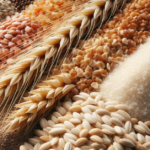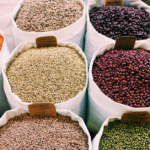I’ll bet you can remember the day you were diagnosed with diabetes like it happened yesterday. I certainly can.
It was shocking, unexpected and left me in a daze. When I told my wife about the diagnosis I could only tell her I had Type 2 Diabetes, there is no cure, I got a prescription and the doctor had recommended that she and I go through a course at a local diabetes clinic.
I vaguely remembered the doctor talking about insulin, changing my diet, and the metabolic syndrome.
We signed for the next scheduled training at the clinic, which was three weeks out.
While we waited to start the classes I bought a number of books about diabetes.
While they all had useful information, the radical dietary shifts many recommended seemed unattainable. To make matters worse, the approaches they advocated conflicted with each other.
When it came to insulin resistance, some books took a deep dive while others skimmed the surface. Once again, there were conflicting theories about how our cells interacted with insulin.
I have to say the discussion about insulin resistance at the clinic was cursory at best. It consisted of the person doing the intake pointing to a two-line chart on the wall and explaining the basics of cells not taking up glucose and the pancreas working harder and eventually wearing out and not producing enough insulin.
Based on some of the recent comments I’ve been seeing on an online group it appears that many people aren’t given much information about insulin resistance when they are first diagnosed. So, I decided to do an overview post about it that might be helpful in understanding what it is and how it relates to Type 2 Diabetes.
What is Insulin Resistance Really?
Insulin is a vital hormone made in the pancreas that allows cells throughout your body to absorb and use glucose from your bloodstream. It works like this, the food we eat is broken down into blood sugar (glucose), which enters the bloodstream and causes the pancreas to release insulin.
Insulin then helps blood sugar enter body cells to be used for energy. It signals the liver to store excess blood sugar. Insulin decreases once blood sugar levels drop so the liver can release stored sugar between meals.
Insulin resistance is when your cells become less responsive to insulin over time, requiring more insulin to maintain normal blood sugar levels. This results in high insulin levels in your blood stream, known as hyperinsulinemia.
The liver redirects excess blood sugar to be stored as fat when the muscles can no longer store any more.
Insulin resistance causes the pancreas to increasingly overproduce insulin while cells decrease in responsiveness, leading blood sugar to remain dangerously elevated.
As insulin resistance progresses, your pancreas has to work harder to produce more insulin. Eventually, your pancreas can no longer keep up with the insulin demands, leading to persistently high blood sugar levels characteristic of type 2 diabetes.
What Causes Insulin Resistance?
Insulin resistance is primarily driven by lifestyle factors like obesity, lack of exercise, and an unhealthy diet high in refined carbohydrates and sugars. Genetics can also play a role, especially in syndromes like polycystic ovarian syndrome (PCOS), a common hormonal disorder that affects ovaries in women during childbearing years.
The main lifestyle culprit is excess weight, especially belly fat. Fat cells release hormones and substances that make your body less sensitive to insulin. Specifically, fat accumulation leads to high levels of free fatty acids in the bloodstream that disrupt insulin signaling at the cellular level. Fat buildup inside muscle and liver cells can also interfere with their ability to absorb glucose properly.
Additionally, a diet high in processed carbs and sugary foods further spikes insulin demands by causing large spikes in blood glucose levels after eating. The constant demands on the pancreas to produce insulin wears it out over time.
Signs and Symptoms of Insulin Resistance
In the early stages, insulin resistance may not cause any obvious symptoms. But over time, it can lead to issues like:
- Dark, thick patches of skin
- Increased hunger and thirst
- Frequent urination
- Fatigue
- Blurred vision
- Recurrent infections
You may also experience symptoms related to conditions associated with insulin resistance like obesity, high blood pressure, high cholesterol, non-alcoholic fatty liver disease, and of course, type 2 diabetes. Monitoring for signs of insulin resistance, like skin changes, along with routine blood work allows early detection and treatment.
How Insulin Resistance Is Evaluated
Your doctor can make an assessment based on risk factors, associated conditions, and lab results. Common lab tests that provide clues about insulin resistance include:
| Test | Result Indicating Insulin Resistance |
| Fasting blood glucose | 100-125 mg/dL (prediabetes), over 126 mg/dL (diabetes) |
| Hemoglobin A1C | 5.7-6.4% (prediabetes), over 6.5% (diabetes) |
| Oral glucose tolerance test | 140-199 mg/dL at 2 hours (prediabetes) |
| Fasting insulin level | Higher than 25 IU/mL | | Triglyceride to HDL cholesterol ratio | Above 3 (men), above 2.5 (women) |
Your doctor may also calculate HOMA-IR using your fasting glucose and insulin levels. A score above 2.0 suggests insulin resistance. HOMA-IR (Homeostatic Model Assessment of Insulin Resistance) tells you and your doctor how much insulin your pancreas needs to make to control your blood sugar levels. It was developed in the 80s and is an indirect measure: it is calculated from your fasting glucose and fasting insulin levels.
Complications of Uncontrolled Insulin Resistance
Left untreated, insulin resistance can progress to type 2 diabetes and lead to a number of severe complications including:
Microvascular complications, diseases or complications of the finer blood vessels in the body:
- Diabetic retinopathy – damage to blood vessels in the eye causing vision loss
- Diabetic neuropathy – nerve damage leading to pain/numbness in hands and feet
- Diabetic nephropathy – kidney damage that can lead to kidney failure
Macrovascular complications a disease of any large (macro) blood vessels in the body:
- Coronary artery disease – plaque buildup in heart blood vessels increasing risk of heart attack
- Peripheral artery disease – reduced blood flow to legs that can require amputation
- Stroke – reduced blood flow to brain
Beyond the direct effects of elevated blood sugar, insulin resistance also promotes inflammation, oxidative stress, and metabolic abnormalities that further accelerate the development of vascular disease and damage throughout the body. That’s why getting insulin resistance under control early is so important.
Diet and Exercise for Improving Insulin Sensitivity
The cornerstone of managing insulin resistance is lifestyle modification focused on healthy eating, exercise, and weight loss.
By reducing calorie intake, avoiding refined carbs, and increasing activity, you can decrease fat stores that contribute to insulin resistance and drop excess pounds.
Some of the more common suggestions include:
Follow a diet emphasizing vegetables, fruits, whole grains, nuts, seeds, lean proteins like fish and chicken, and healthy fats like olive oil.
Limit sweets, refined grains like white bread and pasta, and processed snack foods.
Aim for 30-60 minutes per day of moderate activity like brisk walking.
Strength training 2-3 times a week also helps improve insulin sensitivity.
Losing even 5-10% of your body weight can significantly improve insulin resistance.
Drink water instead of sugary beverages.
Limit alcohol which can interfere with blood sugar regulation.
Manage stress levels with relaxation techniques like yoga, meditation, or deep breathing exercises, as stress hormones can contribute to insulin resistance.
Medications for Improving Insulin Sensitivity
If lifestyle measures alone don’t bring your blood sugar under control, medications can help increase insulin sensitivity and regulate blood glucose levels.
This post is for informational purposes only and does not contain medical advice. Talk to your doctor about medications that may be helpful for you, including appropriate dosing and potential side effects.
Here are some of the medications that are commonly prescribed when this post was written. New medicines for controlling and managing diabetes are being introduced at a dizzying rate, and this post will not be updated to include new offerings as they become available.
Metformin is usually the first medication prescribed, as it reduces glucose production by the liver and improves insulin sensitivity. It may also contribute to modest weight loss. It is generally recommended that you start with a low dose with meals to reduce gastrointestinal side effects.
Other classes of medications that can be added to metformin or used alone include:
SGLT2 inhibitors like empagliflozin (Jardiance) – Help kidneys excrete excess glucose through urine; may promote weight loss
GLP-1 receptor agonists like liraglutide (Victoza) – Stimulate insulin release and suppress appetite via injection
Thiazolidinediones like rosiglitazone (Avandia) – Make muscle/fat cells more insulin sensitive; may cause fluid retention
Insulin sensitizers like pioglitazone (Actos) – Reduce insulin resistance in liver and muscles
Alpha-glucosidase inhibitors like acarbose (Precose) – Slow digestion of carbs to lower blood sugar spikes
Is Surgery Effective for Treating Insulin Resistance?
For some individuals with severe obesity, bariatric weight loss surgery can be an effective option for jumpstarting long-lasting weight loss and improving type 2 diabetes.
Procedures like gastric bypass that combine stomach reduction with bypassing part of the small intestine have been shown to not only reduce body weight but also enhance glycemic control independent of the weight loss.
However, bariatric surgery carries significant risks and requires dramatic diet and lifestyle changes post-surgery. Your doctor can advise you abour your candidacy for weight loss surgery and which procedures may be most appropriate based on your health profile.
Living with Insulin Resistance Long-Term
Managing insulin resistance requires commitment to permanent lifestyle changes and ongoing adherence to your treatment plan. But the effort is well worth it to avoid the devastating complications of uncontrolled diabetes.
Here are some tips for living well with insulin resistance:
Monitor your blood sugar regularly with a glucose meter to catch highs and lows early. A continuous glucose monitor can provide helpful 24/7 tracking. I know one person with Type 1 Diabetes who relies on their CGM a lot, but he also finds the constant notifications a bit annoying from time to time.
Stay on top of all doctor appointments for screening tests and managing medications/dosages. Don’t hesitate to call your provider if you have concerns between visits.
Enlist support from family and friends to help you stay motivated for healthy eating, physical activity, and other positive lifestyle changes. Consider joining a gym or support group.
Identify your personal triggers for unhealthy choices like stress or boredom and have plans in place to redirect yourself. It can help to build a list of healthy snacks, activities, and distractions you can use when tempted.
Remove unhealthy choices from your home and work place. If you are unable to do that try getting them out of sight by removing them from places like the snack bowl or your favorite places to have snacks handy so you can grab one as you walk by, watch TV or wherever they might be visible and tempting.
Stay hydrated, keep feet clean and moisturized, and inspect them regularly to prevent foot complications.
Learn to recognize signs of hyperglycemia (high blood sugar) like increased thirst and check glucose levels promptly when symptoms arise.
Reduce stress with meditation, yoga, massage, or other relaxing activities.
Make sleep a priority. Do the things we all know about to get the right kind and amount of sleep. I’m talking about hings like having a regular bedtime schedule, not watching TV in the bedroom late at night, avoiding using devices such as phones and tablets just before bedtime.
While insulin resistance can feel overwhelming at times, developing sustainable lifestyle habits and working closely with your healthcare providers will allow you to effectively manage blood sugar, avoid complications, and live a full, active life. Be patient with yourself but persistent, and remember that small steps forward make a big difference long-term.
###
Remember, proactive self-care matters. Every step we take, every decision we make to better manage our diabetes makes a difference in how well and how long we live. Choose wisely. Live long, love life and be well.
The information on this site is not intended or implied to be a substitute for professional medical advice, diagnosis or treatment. The information on this site is for informational purposes only and is not intended to diagnose, treat, or cure any type of disease or condition. Diabetes Control Today does not guarantee any results for your specific situation. In support of our website, we may share resources offered by trusted partners. If you purchase products from any of these partners, the owners of this site may receive a portion of the proceeds. These affiliations allow us to continue bringing you valuable, potentially life-changing content.





![How Sugar & Processed Foods Impact Your Health [Video Interview]](https://diabetescontroltoday.com/wp-content/uploads/2024/01/Lustig-Sugar-and-Your-Health-440x264.png)




















